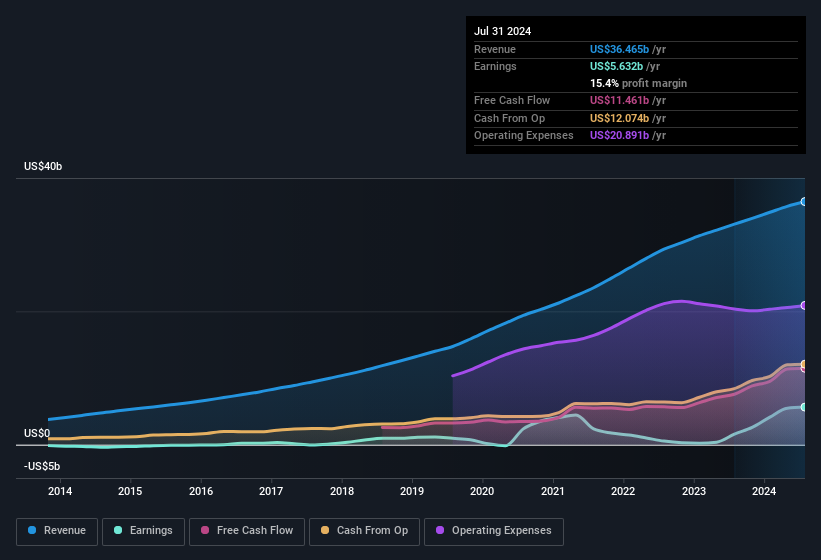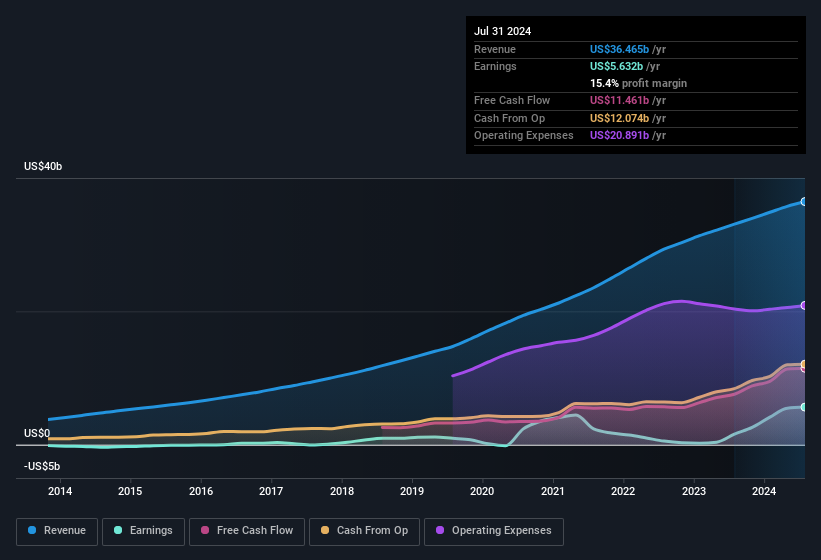Investors were underwhelmed by the solid earnings posted by Salesforce, Inc. (NYSE:CRM) recently. We have done some analysis and have found some comforting factors beneath the profit numbers.
View our latest analysis for Salesforce
Zooming In On Salesforce’s Earnings
In high finance, the key ratio used to measure how well a company converts reported profits into free cash flow (FCF) is the accrual ratio (from cashflow). To get the accrual ratio we first subtract FCF from profit for a period, and then divide that number by the average operating assets for the period. You could think of the accrual ratio from cashflow as the ‘non-FCF profit ratio’.
That means a negative accrual ratio is a good thing, because it shows that the company is bringing in more free cash flow than its profit would suggest. While it’s not a problem to have a positive accrual ratio, indicating a certain level of non-cash profits, a high accrual ratio is arguably a bad thing, because it indicates paper profits are not matched by cash flow. To quote a 2014 paper by Lewellen and Resutek, “firms with higher accruals tend to be less profitable in the future”.
Over the twelve months to July 2024, Salesforce recorded an accrual ratio of -0.11. That indicates that its free cash flow was a fair bit more than its statutory profit. In fact, it had free cash flow of US$11b in the last year, which was a lot more than its statutory profit of US$5.63b. Salesforce shareholders are no doubt pleased that free cash flow improved over the last twelve months.
That might leave you wondering what analysts are forecasting in terms of future profitability. Luckily, you can click here to see an interactive graph depicting future profitability, based on their estimates.
Our Take On Salesforce’s Profit Performance
As we discussed above, Salesforce has perfectly satisfactory free cash flow relative to profit. Because of this, we think Salesforce’s earnings potential is at least as good as it seems, and maybe even better! And on top of that, its earnings per share have grown at an extremely impressive rate over the last three years. The goal of this article has been to assess how well we can rely on the statutory earnings to reflect the company’s potential, but there is plenty more to consider. In light of this, if you’d like to do more analysis on the company, it’s vital to be informed of the risks involved. In terms of investment risks, we’ve identified 1 warning sign with Salesforce, and understanding it should be part of your investment process.
This note has only looked at a single factor that sheds light on the nature of Salesforce’s profit. But there are plenty of other ways to inform your opinion of a company. Some people consider a high return on equity to be a good sign of a quality business. While it might take a little research on your behalf, you may find this free collection of companies boasting high return on equity, or this list of stocks with significant insider holdings to be useful.
Have feedback on this article? Concerned about the content? Get in touch with us directly. Alternatively, email editorial-team (at) simplywallst.com.
This article by Simply Wall St is general in nature. We provide commentary based on historical data and analyst forecasts only using an unbiased methodology and our articles are not intended to be financial advice. It does not constitute a recommendation to buy or sell any stock, and does not take account of your objectives, or your financial situation. We aim to bring you long-term focused analysis driven by fundamental data. Note that our analysis may not factor in the latest price-sensitive company announcements or qualitative material. Simply Wall St has no position in any stocks mentioned.




